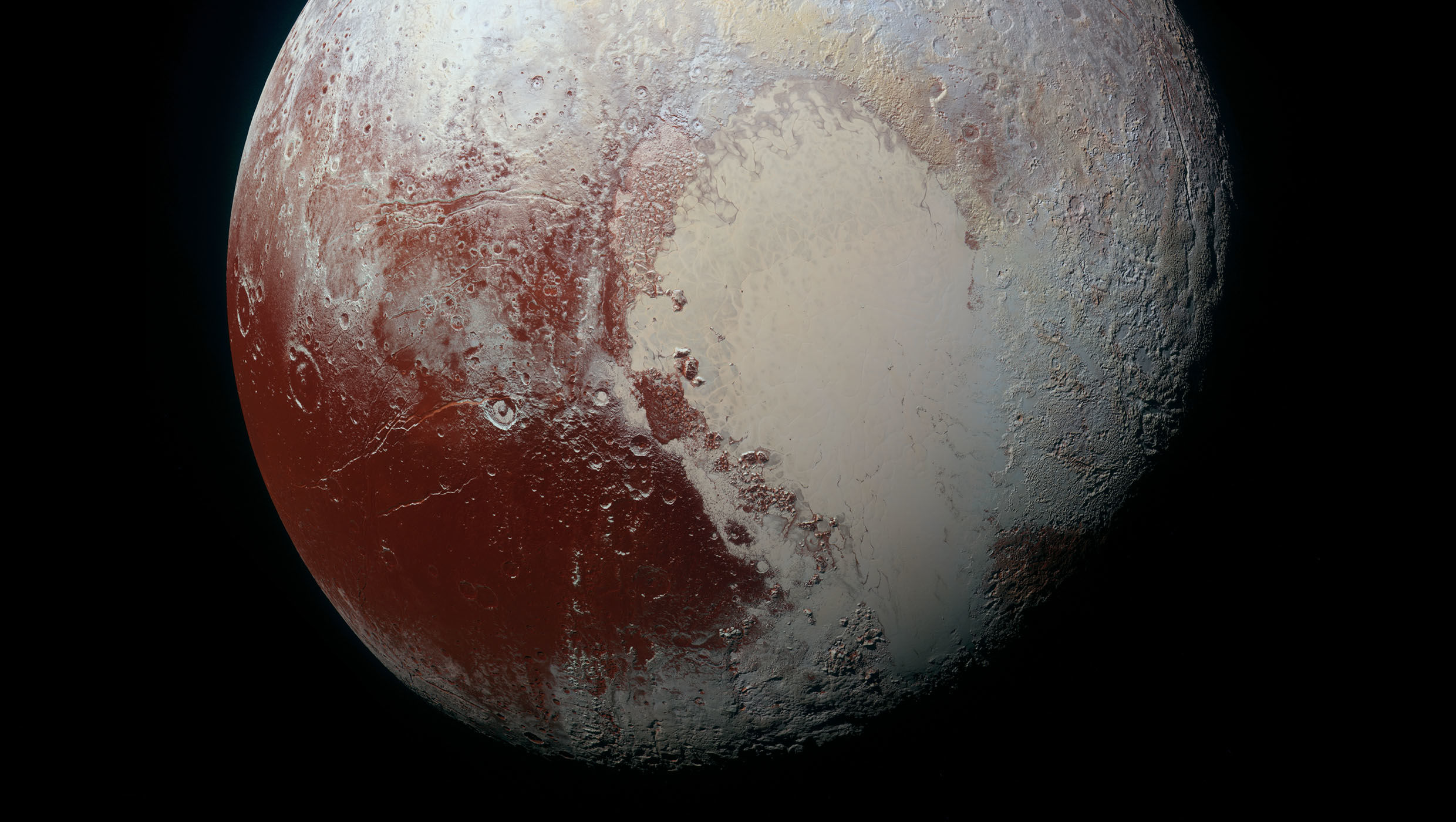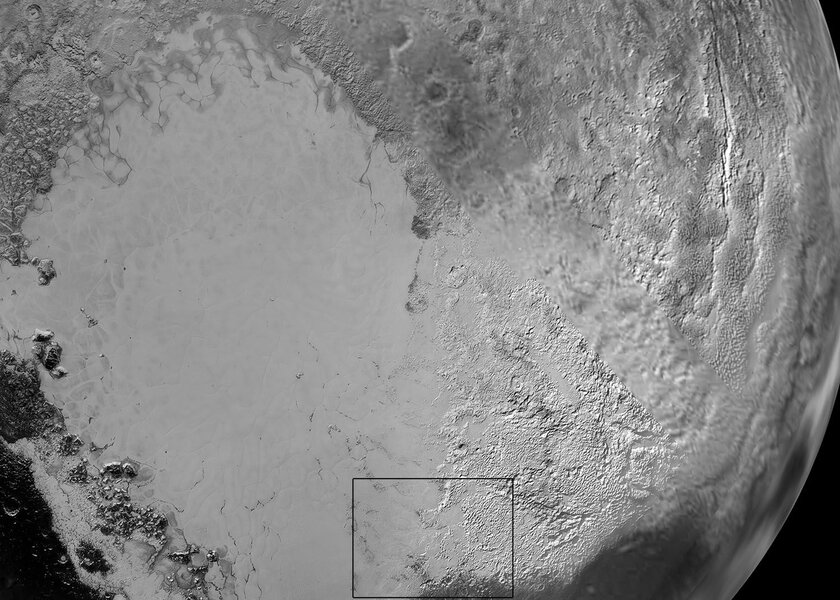Create a free profile to get unlimited access to exclusive videos, sweepstakes, and more!
Pluto’s frozen heart could be causing all those strange formations on its surface

Pluto might have been demoted from planet status, but it still has a heart.
Tombaugh Regio is literally the beating heart of Pluto. Half nitrogen ice and half glacier-studded highlands, this frozen heart is located in the Sputnik Planitia basin and is now thought to control the dwarf planet’s wind circulation — kind of like how the human heart is the epicenter of the human circulatory system. It could also possibly be the source of many strange features, like those weird ice dunes that could be a landscape from beyond the Wall in Game of Thrones.
“Sputnik Planitia may be as important for Pluto’s climate as the ocean is for Earth’s climate,” said NASA Ames astrophysicist and planetary scientist Tanguy Bertrand in an American Geophysical Union (AGU) press release. “If you remove Sputnik Planitia — if you remove the heart of Pluto — you won’t have the same circulation.”
Tombaugh Regio is thought to be the most geologically active “organ” of Pluto. While we can’t exactly jump on a spacecraft and take off to Pluto, scientists have been able to create digital models of how its “blood” of nitrogen (N2) and methane (CH4) circulates to better understand the distribution of ices on the surface (including those dunes otherwise known as “Bladed Terrain” deposits). So much N2 ice accumulates in Sputnik Planitia because of the region’s low elevation, which means a spike in condensation temperatures and pressure.
“Observations of wind streaks and eolian [caused by wind action] linear dunes on Pluto’s surface are indications that Pluto’s atmospheric dynamics can impact the surface geology,” Bertrand and colleagues said in a study recently published in AGU’s Journal of Geophysical Research.
Hi-res simulations of Pluto’s atmosphere that used models and topography data from NASA’s New Horizons spacecraft helped Bertrand and his team demystify at least some things about the atmospheric and near-surface circulation near the heart of Pluto.
They found that even with varying distributions of N2 ice, the same circulation patterns were recognizable in each of the three simulations they ran. Sputnik Planitia experiences a counterclockwise current and winds tend to reverse in the upper atmosphere. Back on the ground, N2 ice flows experience cycles of sublimation (going straight from a solid to a gas) and condensation, which is limited by winds that blow warmer air downward from higher elevations at night.
Pluto’s circulation is still hiding some secrets. There are still some mysteries that may eventually need a lander to be solved. Models were unable to explain asymmetry in the ice, whether in distribution, color, texture, or any combination of these. The variance of bright and dark areas in Sputnik Planitia’s ice sheet is also a cosmic conundrum. Ice thickness is believed to have something to do with it, and so are downward winds that originate in the darker areas of Sputnik Planitia that are covered in mountains. Sublimation may be influenced by these winds carrying warm air from the mountain peaks to the surface.
By the way, the study has also provided insight to that eerie haze around Pluto. Haze particles accumulating in Sputnik Planitia could also explain the odd variances in ice color. It has also been found that there is more haze produced in the upper atmosphere above the north pole and in the northern hemisphere as a whole than further south, where sunlight causes CH4 molecules to decompose in a process called photolysis. The simulation also showed that haze particles are drawn toward the surface by N2 ice condensation and repelled by sublimation.
“Despite a frozen surface and a tenuous atmosphere, Pluto’s climate is remarkably active,” Bertrand said.
That, and the object in space that literally wears its heart on its sleeve — er, surface — still has so many strange and fascinating things to reveal to us even if it's never declared a planet again.















